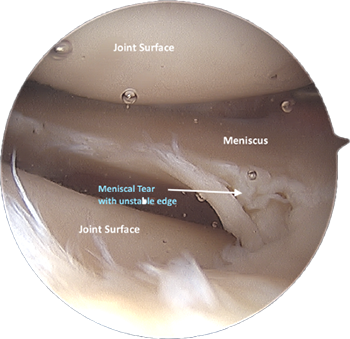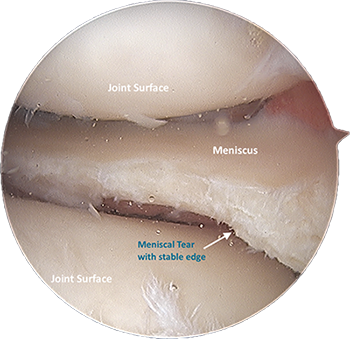What is the meniscus?
The meniscus is a wedge shaped semi-circular pad made of fibro-cartilage that acts as the shock absorber of the knee.
How does it tear?
Acute meniscal tears typically occur through twisting, loading or direct trauma to the knee. Different types of tears exist, and can be described by how recently they occurred, the shape of the tear, and the location of the tear within the meniscus itself.
What problems can a Meniscal Tear cause?
A pop may be felt when the meniscus tears acutely. People can usually still walk after the tear. Common symptoms include pain, swelling, stiffness, mechanical symptoms of clicking and catching, a feeling of giving way or the knee locking in position.
How is a meniscal tear treated?
The majority of meniscal tears are initially treated non-operatively with RICE and range of motion exercises through physiotherapy to strengthen your knee muscles.
A failure of non-operative management to control the symptoms of recurrent pain, swelling or mechanical catching and locking is also a reason to consider meniscal surgery.
What happens during the Meniscal Debridement surgery?
If the tear warrants surgery and is deemed not for repair, then the surgery performed is Meniscal Debridement. This day procedure surgery is performed via a Knee Arthroscopy.
Under a general or spinal anaesthetic, two small incisions are made in the front of the knee to gain access into the joint. A full assessment is performed within the knee to rule out other conditions, and the diagnosis of a meniscal tear suitable for debridement is confirmed.
The torn meniscus is trimmed with surgical instruments to a stable edge, so that it won’t get pinched within the joint and cause pain anymore. The surgery takes around 20 minutes to perform.


You will go home on the day of surgery once you recover from the anaesthetic. Before you leave hospital, your surgeon from Melbourne Hip and Knee will talk to you about the findings of the arthroscopy and the management performed. They will go through this with you again at your two week review.
What happens after surgery?
You will be given instructions about how to care for your knee and the dressings in the first two weeks. You will be able to walk on your knee, but some people feel safer with crutches for a few days. You will be able to move the knee without restrictions, and no brace is required. You may have some mild pain and swelling for a few weeks after your surgery, and your surgeon will ensure that you have adequate pain relief to go home with.
Post operative recovery
Your surgeon will see you at two weeks in our rooms at MHK to ensure you have recovered well, and to explain the findings and management of the arthroscopy again. Typically, a second appointment is organised a month or so later to ensure you have returned to full activity.
For a simple meniscal tear, you should be able to return to a desk job after a week, be able to spend a few hours on your feet after 2 weeks and be able to return to gentle exercise or heavy work after about 4 weeks. You will be given some physiotherapy exercises and it is important to perform them twice a day for a few weeks until your muscle function has returned.

